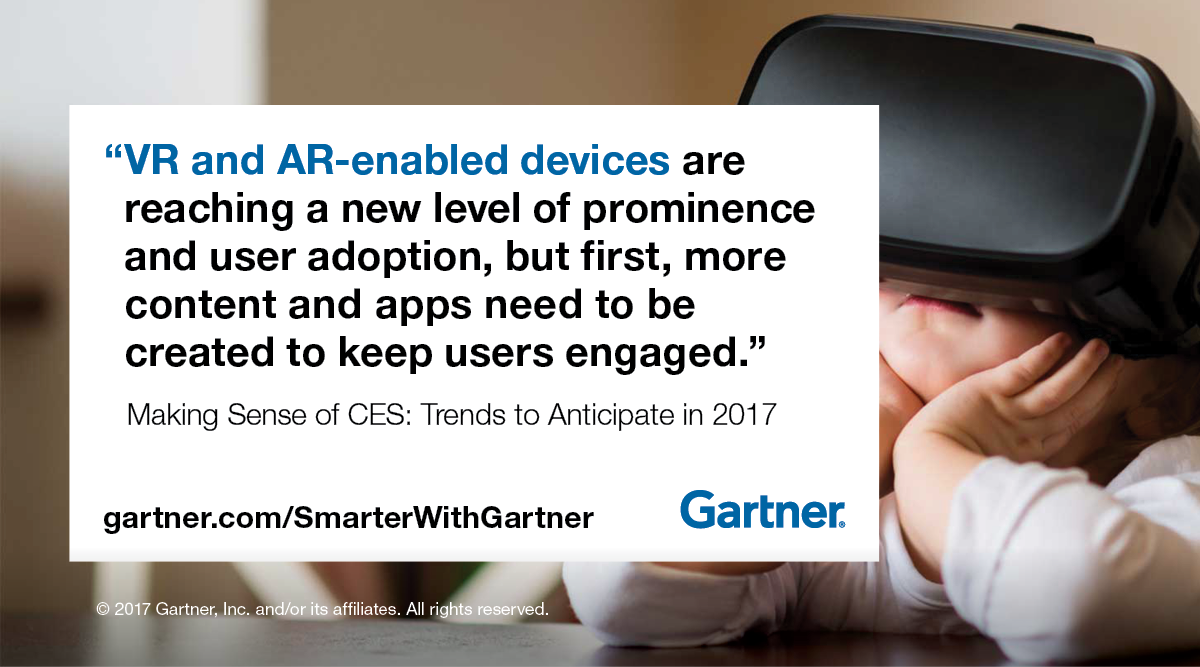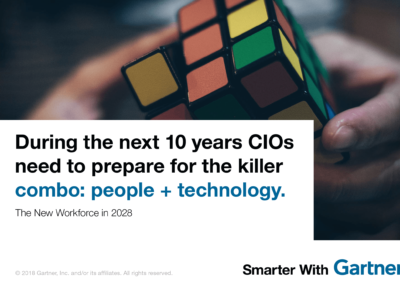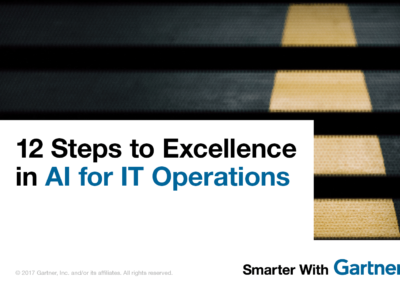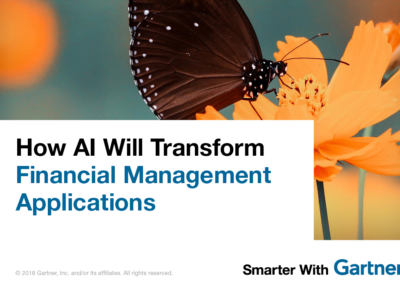New technologies will drive innovative solutions in the personal technology landscape.
The door has closed on CES 2017, the consumer electronics conference, and now technology leaders need to sort out what trends will fade and which are here to stay. With the boom of mobility and connectivity, CES has evolved into more than just a gadget show.
This year, the show’s most intriguing new products on display were even smarter, more intuitive and personalized through the innovation of internet-connected devices, virtual personal assistants (VPAs), augmented reality (AR) and virtual reality (VR)-enabled devices, and connected cars. Here are some of the most talked-about trends from CES, and how Gartner analysts see them evolving in 2017.
It gets personal with VPAs
Personalization became more autonomous, largely driven by the algorithms that make artificial intelligence (AI) smarter. One of the most personalized AI uses seen this year was with VPAs.
“This year we saw a significant shift in VPA technology as the main focus of these headline-grabbing product launches,” said Tuong Huy Nguyen, principal research analyst. “Although Amazon Alexa-enabled devices were virtually everywhere at CES, dozens of other devices, from kitchen stoves to light switches to refrigerators, were introduced, all incorporating some form of voice-activated features powered by technology from Amazon, Google, Apple and Microsoft.”
Despite all the attention on new gadgets debuting at CES, all conversations pointed back to advancing the state of the user experience (UX), and how this impacts the innovation of more personalized and connected devices.
Enthusiasm for VR and AR
VR- and AR-enabled devices are reaching a new level of prominence and user adoption, but more content and apps need to be created to keep users engaged.
“We can anticipate a device churn in 2017 as providers become more aware of what elements they must fine-tune to achieve a satisfactory VR and AR experience,” said Brian Blau, research vice president. “360-degree cameras, for example, are a growing segment of the VR experience, and we expect more consideration will go into building out features like livestreaming capabilities and 8K quality in the year ahead.”
CES becomes the Las Vegas Auto Show
Autonomous vehicles continue to fascinate as technology companies become more entrenched in automakers’ engineering and design processes. Gartner forecasts that by 2020, 21 million new automobiles will be equipped with data connectivity, either through a built-in communications module or by a tether to a mobile device. This growing demand for connectivity means technology providers and automobile manufacturers need to narrow the divide between Silicon Valley and Detroit. Together, they must understand the implications of embedded technology in vehicles, and how they can work together to bring a more personalized yet safe driving experience to life.
User experience is the real star of the show
“Despite all the attention on new gadgets debuting at CES, all conversations pointed back to advancing the state of the user experience (UX), and how this impacts the innovation of more personalized and connected devices,” said Mr. Nguyen. “This will be one trend to watch in 2017 as vendors become increasingly aware that to create a product that beckons attention, refining UX design is a must. Otherwise, they face the challenge of coming to an innovation standstill.”
Get Smarter
Gartner Webinar
Additional information on how the technologies introduced at CES 2017 will impact technology and service providers and enterprises is available in the on demand complimentary webinar “CES 2017.”










